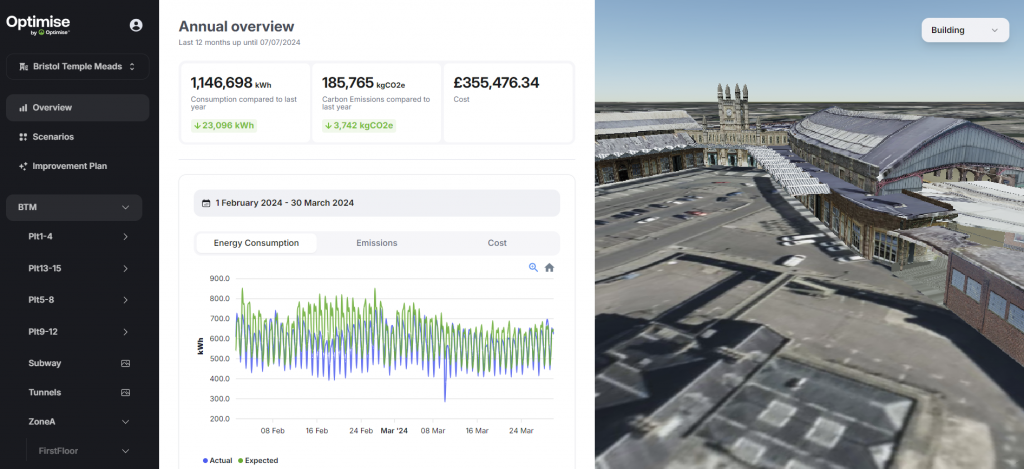Digital twin for Temple Meads station
A SouthWest startup has developed a digital twin virtual version of Temple Meads to manage sensors across the Bristol station.
The digital twin technology is supplied by start-up Optimise AI and installed at Bristol Temple Meads as part of the Station Innovation Zone testbed. The sensors across the station have helped to inform rail managers of efficiency savings that could be found both inside and around the historic building.
The digital twin has a 3D visualisation of the station and takes in data from sensors across the site. This has shown that electricity consumption at Temple Meads has the potential to be reduced by as much as a third from static measures (such as new windows, doors, better insulation, heat pumps or LED lighting) or with dynamic approaches such as changing heating levels or intensity of illumination.

“We created a digital twin to generate a virtual representation of Bristol Temple Meads in order to work out exactly what is keeping the station functioning, and keeping its occupants happy and healthy. With all of that information, we can generate a scenario for improvement,” said Optimise AI director Nick Tune. He is an engineering technologist who previously worked for the Building Research Establishment (BRE) in Wales and consultant Atkins. He established Optimise AI at the start of this year as a spin out from Cardiff University’s school of engineering.
Sensors around the station measure how many people were using rooms and public spaces in order to determine the most appropriate temperature and lighting levels, and to monitor humidity and carbon dioxide around the station.
It also used sensors at barrier gates and considered train timetable detail, to help the system learn which platforms were about to receive an influx of passengers when, in order to alter energy output accordingly and save money.
In stations, the largest consumers of energy tend to be lighting and the operation of machinery such as lifts and escalators. “Stations can be massively wasteful environments and there is often a lack of knowledge as to how many of them are performing,” says Tune.
“My whole focus is around using digital systems to deliver a more sustainable built environment by minimising electricity usage and carbon emissions. We have shown the system can deliver savings, having previously used the technology in care homes and leisure centres.
“What we have created here is a digital twin that provides real value using live data to predict how a station is going to perform, and how conditions can be improved.”
Moving forward, Tune hopes to roll out the digital twin to other large stations, as well as rail depots and line-side buildings housing operational equipment beside railway tracks. “There’s a massive opportunity to look energy and carbon for the railways on a whole estate level,” he said.
